On October 5, 1962, the 1st James Bond film, Dr. No, premiered in London (it would arrive in the US the 8th of May of 1963).
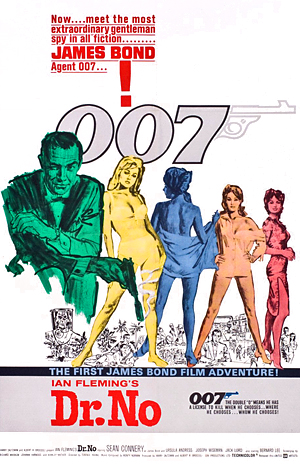
On October 5, 1962, the 1st James Bond film, Dr. No, premiered in London (it would arrive in the US the 8th of May of 1963).

Posted in Because I Can, On This Day, The Big Screen
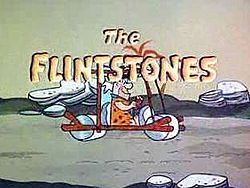
The Flintstones is an animated American television sitcom that ran from September 30, 1960 to April 1, 1966 on ABC. Produced by Hanna-Barbera Productions, The Flintstones is about a working class Stone Age man’s life with his family and his next door neighbor and best friend. It has since been re-released on both DVD and VHS.
Critics and fans alike agree that the show was an animated imitation of The Honeymooners with rock puns thrown in. William Hanna admitted that “At that time “The Honeymooners” was the most popular show on the air, and for my bill, it was the funniest show on the air. The characters, I thought, were terrific. Now, that influenced greatly what we did with “The Flintstones”… “The Honeymooners” was there, and we used that as a kind of basis for the concept.” However Joseph Barbera disavowed these claims in a separate interview, stating that “I don’t remember mentioning “The Honeymooners” when I sold the show, but if people want to compare “The Flintstones” to “The Honeymooners,” then great. It’s a total compliment. “The Honeymooners” was one of the greatest shows ever written.” Its popularity rested heavily on its juxtaposition of modern-day concerns in the Stone Age setting
Posted in Because I Can, On This Day, The Little Screen (Television)
The USS Nautilus, the world’s first nuclear submarine, is commissioned by the U.S. Navy.
The Nautilus was constructed under the direction of U.S. Navy Captain Hyman G. Rickover, a brilliant Russian-born engineer who joined the U.S. atomic program in 1946. In 1947, he was put in charge of the navy’s nuclear-propulsion program and began work on an atomic submarine. Regarded as a fanatic by his detractors, Rickover succeeded in developing and delivering the world’s first nuclear submarine years ahead of schedule. In 1952, theNautilus‘ keel was laid by President Harry S. Truman, and on January 21, 1954, first lady Mamie Eisenhower broke a bottle of champagne across its bow as it was launched into the Thames River at Groton, Connecticut. Commissioned on September 30, 1954, it first ran under nuclear power on the morning of January 17, 1955.
Posted in On This Day
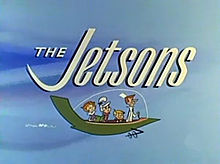
On September 23, 1962, the Jetsons premiered on ABC.
The Jetsons is a prime-time animated American sitcom that was produced by Hanna-Barbera, originally airing from 1962–63 and again from 1985–87. It was Hanna-Barbera’s Space Age counterpart to The Flintstones, a half-hour family sitcom projecting contemporary American culture and lifestyle into another time period. While the Flintstones live in a world with machines powered by birds and dinosaurs, the Jetsons live in a futuristic utopia in the year 2062 of elaborate robotic contraptions, aliens, holograms, and whimsical inventions.
The original incarnation of the series aired Sunday nights on ABC from September 23, 1962, to March 3, 1963. It comprised 24 episodes, and was re-run on Saturday morning for decades. At the time of its debut, it was the first program ever to be broadcast in color on ABC-TV (as The Flintstones, while always produced in color, was broadcast in black-and-white for its first two seasons). Its continuing popularity led to further episodes being produced for syndication between 1985 and 1987.
Posted in Because I Can, On This Day, The Little Screen (Television)
The Hobbit is a novel written by J. R. R. Tolkien in the tradition of the fairy tale. It was first published on September 21, 1937. While it also stands in its own right, it is often seen as a prelude to Tolkien’s monumental fantasy novel The Lord of the Rings (published in 1954 and 1955).
The story, subtitled There and Back Again, follows the adventures of the hobbit Bilbo Baggins as he travels across the lands of Middle-earth with a band of dwarves and a wizard named Gandalf on a quest to restore a dwarven kingdom and a great treasure stolen by the dragon, Smaug.
Posted in Because I Can, Literary, On This Day
![]()
An emoticon is a facial expression pictorially represented by punctuation and letters, usually to express a writer’s mood. Emoticons are often used to alert a responder to the tenor or temper of a statement, and can change and improve interpretation of plain text. The word is a portmanteau word of the English words emotion and icon. In web forums, instant messengers and online games, text emoticons are often automatically replaced with small corresponding images, which came to be called emoticons as well. Certain complex character combinations can only be accomplished in a double-byte language, giving rise to especially complex forms, sometimes known by their romanized Japanese name of kaomoji.
The use of emoticons can be traced back to the 19th century, and they were commonly used in casual and/or humorous writing. Digital forms of emoticons on the Internet were included in a proposal by Scott Fahlman of Carnegie Mellon University in Pittsburgh, Pennsylvania, in a message on September 19, 1982.
Posted in Because I Can, Humor, Literary, On This Day
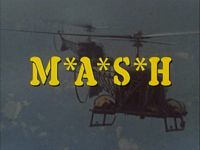
The series premiered on September 17, 1972, and ended February 28, 1983, with the finale becoming the most-watched television episode in U.S. television history.
Posted in Because I Can, On This Day, The Little Screen (Television)
Hogan’s Heroes premiered on September 17, 1965, and quickly became the most popular new show of the year. In fact, for several seasons it ranked in TV’s top 20 programs …but it never escaped the controversy it premise engendered: Was it immoral to portray history’s most evil killers as bumbling -even lovable- buffoons week after week, just to make a buck?
It ran for 168 episodes from September 17, 1965, to July 4, 1971, on the CBS network. Bob Crane starred as Colonel Robert E. Hogan, coordinating an international crew of Allied prisoners running a Special Operations group from the camp. Werner Klemperer played Colonel Wilhelm Klink, the incompetent commandant of the camp, and John Banner was the inept sergeant-of-the-guard, Hans Schultz.
168 Episodes, America must have decided it was ok… 🙂
Posted in On This Day, The Little Screen (Television)
Today, the hard drive is found everywhere–from the PCs we use daily to MP3 players and memory keys so small you can toss them in your pocket and forget you’re carrying around a hard drive. But when the hard drive was first introduced on September 13, 1956, it required a humongous housing and 50 24-inch platters to store 1/2400 as much data as can be fit on today’s largest capacity 1-inch hard drives.
Read more
Posted in Because I Can, On This Day
Please observe a moment of silence at 8:46 a.m. (1246 GMT) to mark the moment when American Airlines Flight 11 crashes into the North Tower of the World Trade Center, at 9:03 a.m. (1303 GMT) when United Airlines Flight 175 crashes into the South Tower of the World Trade Center, 9:37 (1337 GMT) when American Airlines Flight 77 crashes into the Pentagon, at 9:59 a.m. (1359 GMT) when the South Tower Collapses, at 10:03 (1403 GMT) when United Airlines Flight 93 crashes near Shanksville, Pennsylvania, and finally at 10:29 a.m. (1429 GMT) when the North Tower Collapses.
Posted in Because I Can, On This Day, Patriotic

On September 8, 1966, “The Man Trap” was first released upon the world. This, the first episode of one of the most famous TV Shows in history, Star Trek.
On September 7, 1813, the United States gets its nickname, Uncle Sam. The name is linked to Samuel Wilson, a meat packer from Troy, New York, who supplied barrels of beef to the United States Army during the War of 1812. Wilson (1766-1854) stamped the barrels with “U.S.” for United States, but soldiers began referring to the grub as “Uncle Sam’s.” The local newspaper picked up on the story and Uncle Sam eventually gained widespread acceptance as the nickname for the U.S. federal government.
In the late 1860s and 1870s, political cartoonist Thomas Nast (1840-1902) began popularizing the image of Uncle Sam. Nast continued to evolve the image, eventually giving Sam the white beard and stars-and-stripes suit that are associated with the character today. The German-born Nast was also credited with creating the modern image of Santa Claus as well as coming up with the donkey as a symbol for the Democratic Party and the elephant as a symbol for the Republicans. Nast also famously lampooned the corruption of New York City’s Tammany Hall in his editorial cartoons and was, in part, responsible for the downfall of Tammany leader William Tweed.
Perhaps the most famous image of Uncle Sam was created by artist James Montgomery Flagg (1877-1960). In Flagg’s version, Uncle Sam wears a tall top hat and blue jacket and is pointing straight ahead at the viewer. During World War I, this portrait of Sam with the words “I Want You For The U.S. Army” was used as a recruiting poster. The image, which became immensely popular, was first used on the cover of Leslie’s Weekly in July 1916 with the title “What Are You Doing for Preparedness?” The poster was widely distributed and has subsequently been re-used numerous times with different captions.
In September 1961, the U.S. Congress recognized Samuel Wilson as “the progenitor of America’s national symbol of Uncle Sam.” Wilson died at age 88 in 1854, and was buried next to his wife Betsey Mann in the Oakwood Cemetery in Troy, New York, the town that calls itself “The Home of Uncle Sam.”
Posted in Because I Can, On This Day, Patriotic
Posted in Because I Can, On This Day

Diana, Princess of Wales (July 1, 1961 – August 31, 1997)
Posted in Because I Can, On This Day
Sir Thomas Sean Connery (born August 25, 1930) is an Oscar-winning Scottish film and stage actor who is best known as the original cinematic James Bond. His character’s catch phrase “Bond, James Bond” has become considerably famous.
Posted in Because I Can, On This Day, The Big Screen
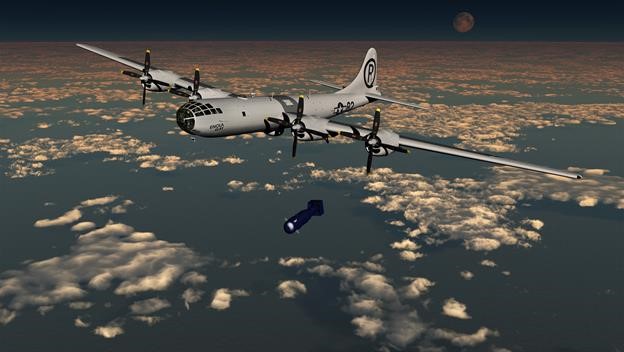
The Enola Gay dropping the bomb on Hiroshima, August 6, 1945.
On this day in 1945, at 8:16 a.m. Japanese time, an American B-29 bomber, the Enola Gay, drops the world’s first atom bomb, over the city of Hiroshima. Approximately 80,000 people are killed as a direct result of the blast, and another 35,000 are injured. At least another 60,000 would be dead by the end of the year from the effects of the fallout
Posted in On This Day
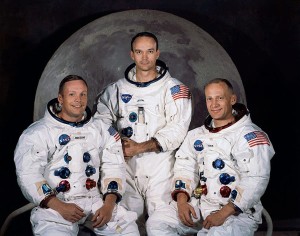
Left to right: Neil Armstrong, Michael Collins, and Buzz Aldrin, the crew of Apollo 11. Photo: NASA.
On this day in 1969, humans walked on the moon for the first time. The Apollo 11 spaceflight brought Americans Neil Armstrong and Buzz Aldrin to the lunar surface on July 20, 1969, at 20:18 UTC.
Michael Collins, the mission’s third member, remained in lunar orbit. All three men returned safely to Earth after an 8-day mission that began with a Saturn V rocket launch from Kennedy Space Center in Merritt Island, Florida on July 16.
This was the fifth manned mission of NASA’s Apollo program, which ran from 1963 to 1972 and included 6 missions that landed on the moon. These were the first and last times human beings set foot on another world.
NASA has a collection of restored HD videos well worth watching on this historic day.
Posted in On This Day, Patriotic
On this day in 1799, during Napoleon Bonaparte’s Egyptian campaign, a French soldier discovers a black basalt slab inscribed with ancient writing near the town of Rosetta, about 35 miles north of Alexandria. The irregularly shaped stone contained fragments of passages written in three different scripts: Greek, Egyptian hieroglyphics and Egyptian demotic. The ancient Greek on the Rosetta Stone told archaeologists that it was inscribed by priests honoring the king of Egypt, Ptolemy V, in the second century B.C. More startlingly, the Greek passage announced that the three scripts were all of identical meaning. The artifact thus held the key to solving the riddle of hieroglyphics, a written language that had been “dead” for nearly 2,000 years.
When Napoleon, an emperor known for his enlightened view of education, art and culture, invaded Egypt in 1798, he took along a group of scholars and told them to seize all important cultural artifacts for France. Pierre Bouchard, one of Napoleon’s soldiers, was aware of this order when he found the basalt stone, which was almost four feet long and two-and-a-half feet wide, at a fort near Rosetta. When the British defeated Napoleon in 1801, they took possession of the Rosetta Stone.
Several scholars, including Englishman Thomas Young made progress with the initial hieroglyphics analysis of the Rosetta Stone. French Egyptologist Jean-Francois Champollion (1790-1832), who had taught himself ancient languages, ultimately cracked the code and deciphered the hieroglyphics using his knowledge of Greek as a guide. Hieroglyphics used pictures to represent objects, sounds and groups of sounds. Once the Rosetta Stone inscriptions were translated, the language and culture of ancient Egypt was suddenly open to scientists as never before.
The Rosetta Stone has been housed at the British Museum in London since 1802, except for a brief period during World War I. At that time, museum officials moved it to a separate underground location, along with other irreplaceable items from the museum’s collection, to protect it from the threat of bombs.
Posted in On This Day

Amelia Earhart (July 24, 1897 – 1937?)
 Amelia Mary Earhart (July 24, 1897 – disappeared 1937) was a noted American aviation pioneer and author.Earhart was the first woman to receive the U.S. Distinguished Flying Cross,awarded for becoming the first aviatrix to fly solo across the Atlantic Ocean. She set many other records, wrote best-selling books about her flying experiences and was instrumental in the formation of The Ninety-Nines, an organization for female pilots. Earhart joined the faculty of the Purdue University aviation department in 1935 as a visiting faculty member to counsel women on careers and help inspire others with her love for aviation. She was also a member of the National Woman’s Party, and an early supporter of the Equal Rights Amendment.
Amelia Mary Earhart (July 24, 1897 – disappeared 1937) was a noted American aviation pioneer and author.Earhart was the first woman to receive the U.S. Distinguished Flying Cross,awarded for becoming the first aviatrix to fly solo across the Atlantic Ocean. She set many other records, wrote best-selling books about her flying experiences and was instrumental in the formation of The Ninety-Nines, an organization for female pilots. Earhart joined the faculty of the Purdue University aviation department in 1935 as a visiting faculty member to counsel women on careers and help inspire others with her love for aviation. She was also a member of the National Woman’s Party, and an early supporter of the Equal Rights Amendment.
During an attempt to make a circumnavigational flight of the globe in 1937 in a Purdue-funded Lockheed Model 10 Electra, Earhart disappeared over the central Pacific Ocean near Howland Island. Fascination with her life, career and disappearance continues to this day.
Posted in On This Day, Planes Trains and Automobiles